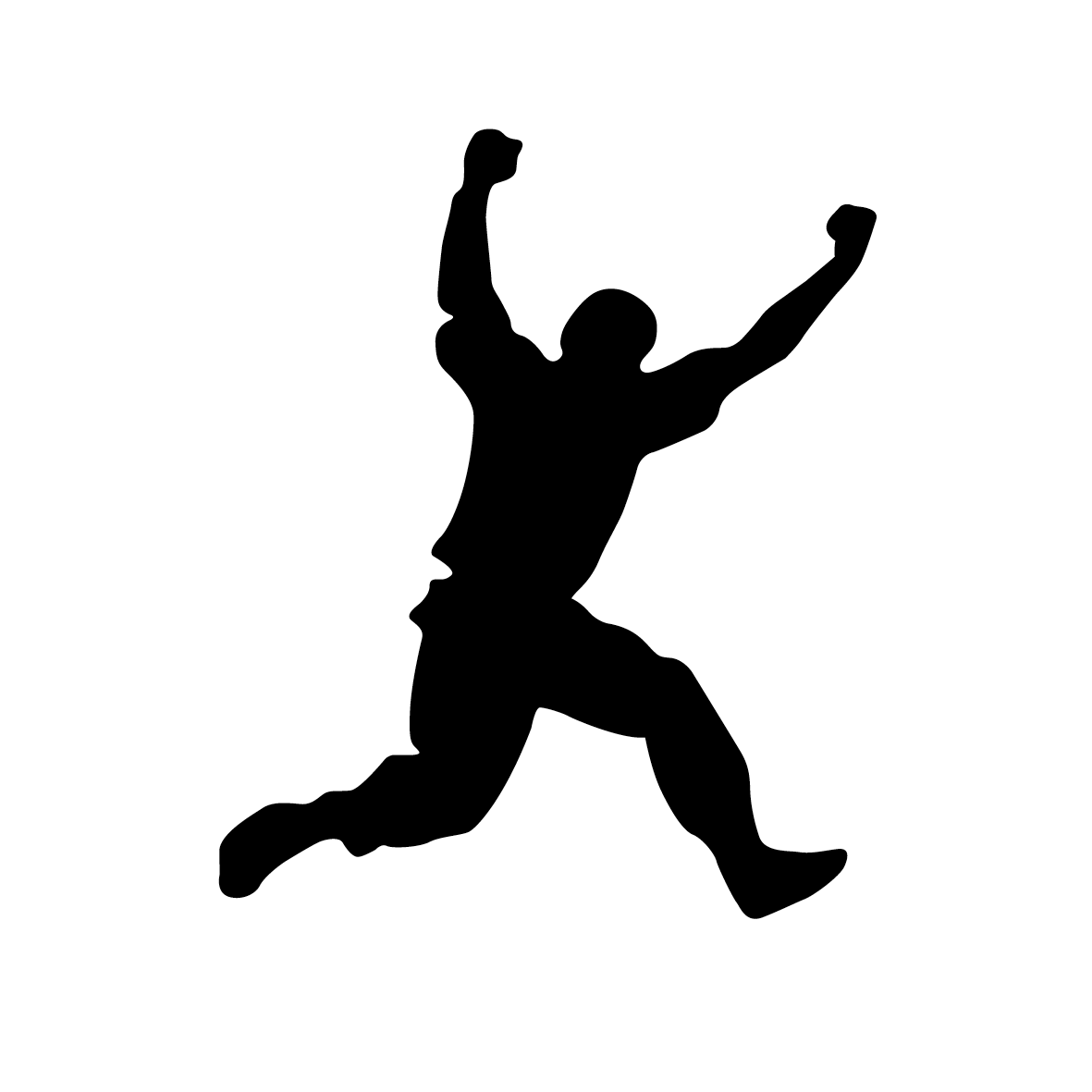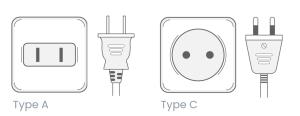Welcome to the start of your Huayhuash Trail Peru Trek
“Peru’s Cordillera Huayhuash has been called “the best alpine trek in the world.” – Gabi Mocatta
“When my good friend David Black told me that the Huayhuash was one of the most incredible places he’d ever trekked, I was always going to sit up and take notice!
Here’s someone who’s hiked vast swathes of the John Muir Trail, remote Hawaiian beaches and so many trails in his own backyard (which just so happens to be the Canadian Yukon), so he’s got street (or is that trail?) cred.
From that point forward, we’ve been desperate to offer it to our people, and we sincerely think this is one of our most exciting offerings in years.”
– Chris Nash, South American Operations Manager
The Cordillera Huayhuash sits approximately 140km south of the city of Huaraz
Your Journey
Guest Portal
You can update all your personal information directly in our Guest’s Portal. There, you can add your Insurance, Flight Details, and anything else we need for the trip. When you first click on the link you will be asked to reset your password. Please use the same email address you used for your booking.
Training

The city of Huaraz sits at 3,052 metres above sea level, whilst many peaks in the Cordillera Huayhuash rise well above 6,000 metres!
Fitness is perhaps the key factor in any trek.
Most people of average fitness for their age could complete most of our treks. Take your time, set your own pace, and enjoy the incredible surroundings.
Most first-time trekkers are concerned that they won’t keep up. They soon discover that a steady and moderate pace will have them in their destination much faster than originally expected.
These treks are not training runs for the fit, but walking holidays for people of all ages, however, the fitter you are, the more you will enjoy it, and you will have enough energy for extra activities.
The best physical preparation for a trekking and climbing trip is to walk.
Start today. Walk on paths that go up and down, or on hills and steps for 30 or 40 minutes, 3 to 4 times a week.
Carry your day pack and wear the boots you plan to wear on the trek around 3 – 4 weeks before your arrival to Peru.
Jogging, swimming, gym work you do additional, are all very helpful.
Regularly within Victoria, New South Wales, and Queensland (we’re constantly working to try and get guides in other states on board as well), we’ll have a variety of guides and trekkers get to know one another whilst working on their fitness and sharing advice on monthly weekend walks.
For information on any upcoming walks, please keep an eye out on our Upcoming Events
NOTE: Every participant should consult a physician well before the expedition date and make sure that they do not suffer from any chronic heart, lungs, cerebral, physical or any other serious illness.
As your service provider and hosts, we will take all necessary steps needed to evacuate injured or ill clients on the understanding that all costs involved will be paid to us before leaving the country (See We’ve got you covered below).
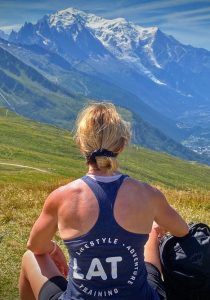
If you already have a frequent training regime, have a higher-than-average fitness level, and already have a few hikes under your belt, check out our Self-Guided Training Program.
Being part of the No Roads Family also gives you access to our On-Demand Trekking Preparation Program, exclusively curated by one of our Guides and Personal Trainers to get you in perfect shape for your trip, at a special discounted rate.
Looking for more training options and ideas for your upcoming trek? Click on the link to visit our exclusive training page for recommendations and suggestions.
GETTING THERE AND AWAY

It is believed around 5,000 people lost their lives in 1941, when an avalanche dropped a huge block of ice into Lake Palcacocha. The deluge flooded a lower lake, that then burst over the city of Huaraz.
Lima serves as both the capital city, and our gateway to Peru.
On arrival at Lima airport, please pass through immigration to the baggage reclaim area. (Note, you must reclaim your luggage to pass customs even if it checked all the way to you final destination.)
There is an ATM (VISA) cash-machine and a Money Exchange (Casa de Cambio) for any Peruvian Soles; the current exchange rate is: USD$1: S/2.50.
Please keep your luggage tickets handy as in all Peruvian airports you may be asked to show these to prove it is your luggage you are removing from the baggage hall. You will pass through customs where you must press the customs ‘button’. Travellers are selected at random, and if the red light shows then customs will ask to look in your baggage.
At the exit to the arrivals hall please make your own way to your airport hotel. This is the only big building you can see in the car-park outside arrivals. It is clearly sign-posted and is joined to the centre of the airport building by a raised walkway. Any porter will know where it is. Official porters usually expect three soles a bag in payment.
As in all Peruvian hotels, reception will need to take a copy of your passport and immigration card when you are checking in. All facilities are available in the hotel for the night. You can change money at the hotel or use the ATMs in the airport. Breakfast is included at the hotel and drinking only bottled water is strongly recommended.
If there’s anything specific you feel we need to know before departure, don’t hesitate to Contact Us.
TRAVEL DOCUMENTS

Joe Simpson's 1988 book 'Touching the Void' recalls the nearly deadly ascent of the 6,344 metre Siula Grande in the Cordillera Huayhuash (and brought the region into the global consciousness)
A valid passport is required by all foreigners travelling to Peru. Passports must have at least 6 months before they expire.
Note: You will be required to sign a Liability Release Form at the hotel before the expedition. The conditions for this form are the same as the ones you have agreed to when booking. This form must be signed before you depart on your trek.
Visa Information
For Australian Passport holders, tourists don’t need a visa. You can get a permit to stay for up to 6 months on arrival.
As of 20 August 2021, Peruvian immigration authorities have lifted the suspension of visa overstay fines due to COVID-19. Foreigners visiting Peru as tourists will be charged a fee of 4.40 PEN per day of overstay. For more information refer to the Peruvian government website (Spanish).
For the most current entry and exit information (for Australian travellers), please consult hhttps://www.smartraveller.gov.au/destinations/americas/peru
International guests: Please consult your relevant government advisory body.
We've Got You Covered
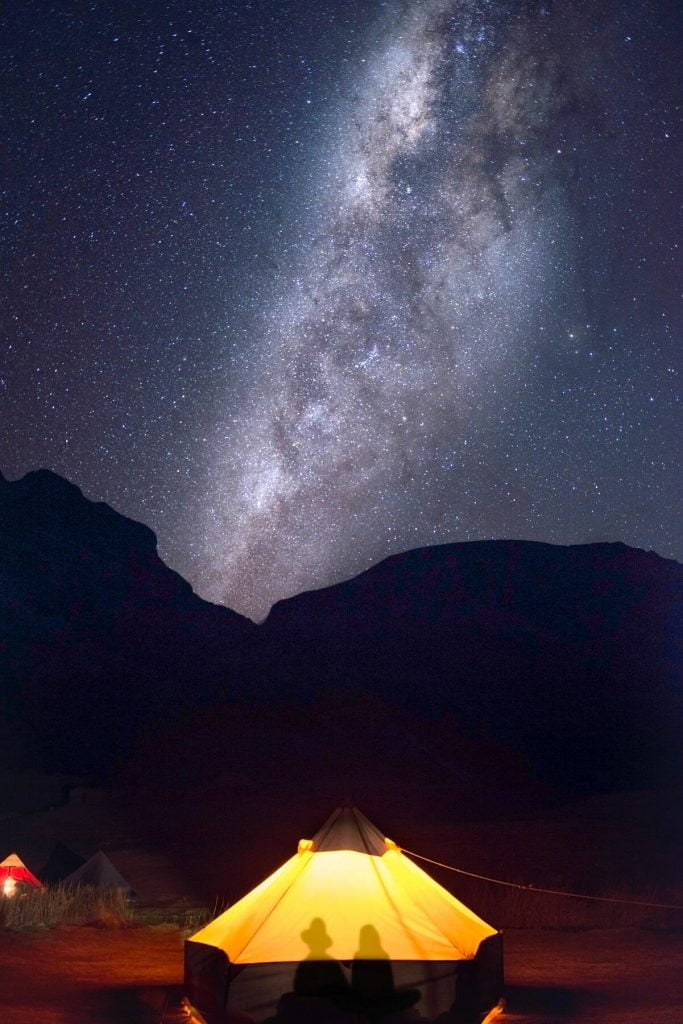
GENERAL TRAVEL ADVICE
All No Roads staff and teams consider guest safety and wellbeing an absolute priority and always follow the travel advice and guidelines of the World Health Organisation (WHO) and Smartraveller. To further maintain the safety of our travelers, we promote good personal and hand hygiene along with adherence to safe food preparation practices.
SPECIAL DIETARY REQUIREMENTS
We are able to cater to all common special dietary requirements.
Please advise us prior to your departure if you have any food allergies we should be aware of.
The No Roads team will do everything it can to support any trekkers with allergies that might require a special diet, by informing all in-country personnel and ensuring reasonable provisions are made for all meals. We do, however, suggest and encourage all affected guests to assist us by providing this information while travelling in situations or instances where it may be required.
WATER
Most plumbing in Peru leaves a lot to be desired. Visitors should drink only bottled water, which is widely available. Do not drink tap water, even in major hotels, and try to avoid drinks with ice.
Note: However, no matter how safe the water may be, we insist that all trekkers use either water purification tablets such as Aquatab (iodine) or Steri Pen.
WOMEN’S HEALTH
On top of the normal health considerations, women are advised to bring a tube of Canesten and an applicator. The Canesten is used for the treatment of thrush (which can be very painful if left untreated) and can be applied to both internal and external thrush.
Prescriptions can be filled at farmacias and boticas; it’s best to know the generic name of your drug, however, to save time and possible confusion, it is recommended you bring most of your medicinal and sanitary needs with you.
MEDICINES AND FIRST AID
All trekkers are recommended to carry a personal first aid kit with medicines for common ailments, cuts and bruises, pain killers, etc. Anyone using any prescription medicines regularly should carry a supply for the whole duration of their expedition. Please consult your doctor and include items and medicines that may be required for you or for the area you are traveling in. No Roads does not supply any medicines and takes no legal responsibility for any medical treatment or professional medical support to our clients.
We will do everything we can to support guests that have disclosed a medical condition, allergy or anaphylaxis, by informing all in country personnel and ensuring reasonable provisions are made. We do however, suggest and encourage all guests in this situation to assist us by reconfirming this information in situations or instances where it may be required to ensure everyone has a safe and enjoyable adventure experience.
*If you have something you are particularly prone to such as ear infections, sinus problems or mild asthma bring what you need with you.
The No Roads Guide will be carrying an extensive Wilderness First Aid Kit.
Your personal first aid kit should contain:
Band aids, Paracetamol, Deep Heat or other muscle liniment, Blister pads, Crepe bandages, Antibiotic cream for cuts and scratches, ‘Imodium’ tablets, Strapping tape (for knees and ankles), Anti chaffing cream e.g. Pawpaw cream, Foot powder, Waterless hand disinfectant, Anti-malarial drugs (see your doctor. This is largely only if you are also visiting the Peruvian Amazon in the Loreto Department), Anti-inflammatory cream, Broad-spectrum antibiotic tablets, Anti-Nausea Tablets.
INSURANCE
Emergency Medical Evacuation Insurance is a requirement for all guests travelling on our expeditions. Once you have booked on an expedition we suggest booking your travel insurance as soon as possible to protect your investment. Trip cancellation insurance will reimburse you for any non-recoverable air or land expenses should you have to cancel your trip due to personal or family illness or leave the expedition early due to other reasons. For our Australian guests, we are offering policies from NIB Travel for adequate cover, and you can contact our office direct, via phone or email, to obtain an insurance quote from us.
For guests travelling with us from outside Australia, please check Travel Insurance options within your Country.
If you should receive an injury 12 months prior to your travel date, you must contact the Insurance Company with details to ensure you are covered for this injury whilst travelling. Should you not do this and require medical assistance for this injury whilst travelling you may not be covered by the insurance company.
In the event that an aircraft evacuation is required, No Roads Expeditions will undertake to arrange the evacuation on the condition that the expenses are reimbursed by the passenger before departing the Country.
Note: Accidents caused by the inappropriate consumption of alcohol or drugs may void your travel insurance.
Get a Quote
While we don’t anticipate any uninvited medical disruptions during your trek, No Roads wants to keep your mind at ease and help you get adequate assistance and cover for your well-earned time away. It is extremely important that we ensure you’re covered during your great alpine experience.
We are able to provide you with Travel Insurance for your trip, allowing you to tick this off your ‘To-Do List” as soon as possible. (We strongly recommend that you take out baggage loss and accident insurance)!
Already have a trusted insurance provider?
That’s no problem at all, our primary concern is that you have adequate cover.
Got a Pre-Existing Condition?
Simply call our Insurance Team and quote the reference number we provide you with and they’ll complete an assessment on your behalf. In many cases, there is no additional premium that needs to be paid! Many common conditions are also automatically covered.
In the event that an aircraft evacuation is required, No Roads Expeditions will undertake to arrange the evacuation on the condition that the expenses are reimbursed by the passenger before departing the Country.
Again, if you’ve any questions, don’t hesitate to ask info@noroads.com.au.
Things to Remember with Insurance


A Credit Card/Travel Card that can be used internationally. Often, any medical centre or hospital will require payment sooner than some insurance companies will have approved payment (meaning you need to be able to pay them, then seek reimbursement from your insurer).
The international emergency contact number for your insurance company. We will initiate emergency procedures for you, however, it is a far easier process for you to coordinate matters with the insurance company directly (most things we are unable to finalise on your behalf).
Documents to keep on your person, or obtain in event of emergency:

A copy of your flight itinerary with information including – Ticket Number, Airline Reference Number (PNR), Agency Flight Reference Number (if purchased via a travel agency/3rd party as well as contact information for them)
A copy of a Medical report (if you required treatment) and keep copies of all receipts for anything that you have been required to pay.
Remember t

Huaraz has been given the nickname “Peruvian Switzerland”
IMMUNIZATION
A valid Covid-19 vaccination is currently required for entry to Peru. You should also consider typhoid and hepatitis vaccinations and make sure your tetanus cover is up to date. Please consult your doctor on these matters.
These requirements are fluid and are changing according to international COVID 19 developments. Please click here for more information about arrival requirements in Peru.
COVID 19: To protect yourself, fellow guests and our team, a full COVID-19 vaccination status is recommended before you participate in any of our expeditions.
Typhoid: Recommended for Peru. Ideally 2 weeks before travel.
Hepatitis A: Recommended for Peru. Ideally 2 weeks before travel.
Influenza: Recommended for Peru. Most common vaccine preventable illness in travellers. Vaccine recommended, effective for 1 year.
Hepatitis B: Recommended for Peru. Ideally 2 months before travel.
Yellow fever: Certificate of vaccination is not required for entry into Peru. Not recommended for travellers whose itineraries are limited to the following areas: all areas above 2300 m altitude, areas west of the Andes not listed above, the cities of Cuzco and Lima, Machu Picchu, and the Inca Trail. Recommended if travelling anywhere else. Ideally 10 days before travel.
Malaria: Consider this seriously. This is largely only if you are also visiting the Peruvian Amazon in the Loreto Department
Plan ahead for getting your vaccinations. Some of them require an initial shot followed by a booster, while some vaccinations should not be given together. This also applies to some malaria prophylactics, which have to be begun at least a week before you leave home.
Accommodation

Although famous as an icon of Brazil, the immense Amazon River, actually traces its origins from the Peruvian Andes!
In Huaraz, our home away from home will be the Hotel Andino (or Andino Club Hotel if you prefer). A short 1 kilometre (10-15 minute walk) from the town centre (the Plaza de Armas), Andino boasts its own restaurant and bar and rooms with either garden or mountain views.
All rooms include a personal safe, private bathrooms with24 hour hot water and wi-fi at no additional cost.
Laundry and massage services (appreciated even more upon completion of the Huayhuash Trail) are also available for a fee.
Hotel accommodation details: Andino Club Hotel – Jiron Pedro Cochachin 357, Huaraz 02001 Ph: +51 43 421662
ACCOMMODATION ON THE HUAYHUASH TRAIL
When trekking, we have no option but to camp, so tents will be our home along the trail.

It is believed, that of an estimated 10 Million Alpacas in the entire world, 7.5 Million of them can be found in Peru!
Getting Outfitted
PERSONAL GEAR
During your trek you will only carry a day pack. Your luggage will either be transfered by car, horse or porter depending on what trip you have booked. With this in mind, please try and pack as light and efficiently as possible.
The luggage that is transferred for you during the day should be packed in a duffle bag or a large sports bag. Suitcases are not recommended.
In your day pack you will carry water, a rain coat, some snacks that will be given to you at the start of the day and whatever you would like to take.
SLEEPING GEAR
To sleep on, No Roads will supply Thermarest sleep pads. To sleep in, we suggest you bring a Sleeping bag (rated to at least -5°C).
If you’re unable to obtain, or don’t wish to carry one from home, they can be hired locally for $10 per day
TREK WEAR
Ultimately you want to be comfortable. Consult our recommended packing list, but above, try to ensure that what you were during your trek, is not being worn for the first time!
Nothing is worth than being on the trail and discovering there that your brand new boots give you blisters…
OPTIONAL EQUIPMENT
Camera film, Spare camera batteries, lens cleaner & paper.- A small supply of favorite snacks – bigger supply for longer and remote area trips.
Note:
If you have any questions regarding the above list or any other items that you want to ask about please contact us. We can provide you additional information at any time.
- Passport
- Insurance Papers (3 copies)
- Tourist Visa
- International Airtickets
- Comfortable clothes for travel
- Plastic Zip Lock bags for paperwork
- Smart clothes for nightlife
- Trekking trousers
- T-shirts – long-sleeved
- Waterproof coat & trousers (poncho)
- Good, well worn-in walking boots
- A warm fleece or down jacket
- Thermal underwear
- After-trek trousers & t-shirt
- Additional Energy or Snack Food
- After-trek shoes (sandals)
- Warm hat & scarf
- Sweater (Available in Cusco)
- Sleeping bag (-5°C) (This can be hired for $10 per day)
- Travel Pillow
- Spare bootlaces
- Socks/underwear
- Warm bed-clothes
- Large waterproof kit bag/duffel bag
- Day Pack & rain-cover
- Trekking-poles & biking gloves
- Water bottle
- Sunglasses & retaining string
- Sun-hat
- Swimsuit
- Small towel
- Head torch & spare batteries
- Book, notepaper & pen (optional)
- Suntan lotion factor 50 + / After sun
- Lip balm
- Binoculars (optional)
- Camera
- Sleeping bag liner (optional)
- Insect Repellent
- Money belt (optional)
- Headlamp or Torch
- Toiletries
- Quick-dry towel
- Earplugs (optional)
- Personal first aid kit to include: painkillers, plasters (band-aids), moleskin, anti-septic cream, after-bite, anti-diarrhoea tablets, throat lozenges, re-hydration salts & personal medication. (No Roads Expeditions carries an extensive first aid kit & Oxygen on all trips, but these are generally for emergencies only)
Staying Safe & Respectful

Machu Picchu was designated a UNESCO World Heritage Site in 1983 and was named one of the New Seven Wonders of the World in 2007.
It’s time for a confession.
We weren’t always this confident at what we do!
This was never through a lack of trying, but the reality is after 20 years sending people to remote parts of the world, we’ve picked up a thing or two…
TIPPING
Tipping in many countries can be a problem and can add a great deal of stress to your holiday. Remember Tipping is entirely voluntary and how much you give depends on how you feel about the service you have received, and also how much you can realistically afford.
For greater context for how much of a difference you may be making, Peru has a minimum salary of 800 Nuevo Soles (US$300) monthly for a 6 day 48 hour week. However, in many of the lower-paid jobs (eg waiters, porters etc) this is not always enforced.
2.50 Peruvian Soles are roughly the equivalent of GBP 60p, USD$1 and 1 Euro.
For a more detailed guide on tipping, please refer to the Trip Notes page.
POWER IN PERU
Peru runs on 220 Volt power. They use either a 2 round prong or 2 flat prong outlets.
If you have 3 prongs or 2 prong angled appliances you will need to bring an adaptor.
.
MONEY
In Peru, the currency is the Soles. For a typical trip, we suggest bringing between $500 and $700 with you. This money can be exchanged at banks, exchange vendors (look for Casa de Cambio) in Cusco or in Lima.
Alternatively, you can use your ATM card to withdraw Soles from ATMs in either town. These funds will be used for tips, food not covered in the trek cost, and souvenirs.
Of course, this is just a guide and depends on what you are thinking about doing before and after the trek.
Note: Accessibility to a cash point/ATM can be limited in more remote
CREDIT CARDS
Credit cards can be used to purchase goods at most major stores and hotels in Peru. Be aware, you may be charged a higher price than if you pay by cash.
THE ENVIRONMENT
Many of the places you will visit are pristine. As travelers, we should try to have as little impact on these natural environments as possible. As such we recommend the following:
- Please do not dispose of plastic bags and wrappers along the trail. These may be put in your backpack and disposed of at your local hotel at the end of the day.
- Follow the well-marked walking trail (for both your safety and to maintain the integrity of the landscape).
- Do not touch or fed any wildlife spotted on the way as you might cause severe harm to the animal.
By abiding by these simple guidelines, you will be protecting the local environment for the people who live there and for their children’s children.
CULTURAL CONSIDERATIONS
Although attitudes are changing, Peru has traditionally been a conservative country. Officially, most of the Peruvians are Roman Catholic, but especially in the countryside, the ancient pre-Hispanic religiosity is still alive. Respect that when visiting temple ruins or other ritual places and behave as if you were in a church.
Peruvians will stand much closer than you will probably like when in conversation. But it will be considered rude if you start backing away. Touching is also very common as well during conversation (This includes hand on shoulders, hand on arms, and hand on hands. Men will commonly walk arm in arm with other men and the same goes for women with other women, but this is just a sign of friendship).
In Peru, people tend to dress a bit more formally than you might be accustomed to. Other than on the beach, you rarely see t-shirts, shorts, and flip-flops or sandals. And even there it is not unusual to see a few people dressed in their “Sunday best”.
Coca leaves are NOT cocaine and they are legal. You can try them to experience the culture. If you don’t like to chew them, try a mate de hojas de coca (Coca Leaf Tea). Also quite effective against altitude sickness. However, the use of coca leaf tea may lead to testing positive on North American drug tests within the next few weeks.
PHOTOGRAPHY
Peru affords incredible opportunities for photography. Ensure that you are familiar with your camera well before your trek, and that your camera battery is strong (and bring a spare).
When taking photographs of local people, please ask their permission first and respect their wishes. This is normal courtesy. All you need to do is hold up your camera and wait for a response.
WHAT NOT TO DO IN HUARAZ
You are now at an altitude of 3000 metres. Take it easy for a few days while your body adjusts to the lack of pressure and oxygen. Slight headaches, sleeplessness, dizziness, breathlessness, and confusion are common. Take Mate de Coca (Coca leaf tea) and a painkiller, avoid large meals, alcohol, smoking, and stop if you overexerting yourself. Severe headaches, severe noisy breathing, and unconsciousness are not common – get help immediately you have severe altitude sickness.
Please drink only bottled water to avoid any stomach problems.
Please do not put toilet paper down the toilets as it blocks them. Use the bins provided.
Please look after your valuables and do not leave temptation in any hotel room, tent, taxi, restaurant, and especially in the markets. Please use the safe in the hotel.
Take official taxis after dark. Official taxis have hexagonal badges in the windscreen and preferably with telephone number light boards mounted on the roof.
Physical Preparation

Over the course of 2019, our guides donated their time and expertise to conduct over a dozen training walks available to ANYONE (yes, open to the public) across such beautiful locations as the Blue Mountains west of Sydney, to the 1000 Steps in Melbourne's outer east!
FITNESS
Training like it is the real deal!
You know what they say (whoever ‘they’ are):
“Failing to prepare is preparing to fail”
The secret is to do exercises that simulate what the expedition will be like, so hiking with a pack up and down hills for a few hours is ideal. Don’t forget to wear in your clothing and walking shoes/boots/socks so you discover any issues with them before it is too late. Wearing in your footwear usually takes several months of walking, not two or three training walks.
Consider training with 15-20kg of weight so that the recommended 12kg on the trek will be lighter than what you’re used to. This will offset the breath-sapping impact of South American altitude. If you are planning to use trekking poles, train with them now (they are so common these days, that no one will think that you’re strange).
We all have busy lifestyles so if this is not possible, a hike into the hills every two or three weeks would be beneficial. We believe this will really help you enjoy your time on the expedition.
Never do on the trek what’s not been tested by you (for months) in training.
That is, if you haven’t tried it during months of advanced training, don’t succumb to last minute “bright ideas” (from yourself or others) on the journey unless it has proven okay for you many times in training, for example:
Don’t wrap your feet or toes in sports tape!
Don’t buy new boots or socks just before going on your trek!
Don’t wear new clothes!
Know The Lingo

There are 84 languages spoken throughout Peru, with 3 official languages. Spanish, Aymara & Quechua
A little effort to speak like a local can be a great icebreaker (as you stumble over the few words you remember) and is always appreciated by those whose homeland you are visiting.
SOME BASIC SPANISH TO GET YOU STARTED
Hello ~ Hola ~ o.la
Goodbye ~ Adios ~ a.dyos
How are you? ~ Que tal? ~ ke tal
Fine thanks~ Bien gracias ~ byen gra.syas
Excuse me ~ Perdon ~ per.don
Sorry ~ Lo siento ~ lo syen.to
Please ~ Por favor ~ por fa.vor
You are welcome ~ De nada ~ de na.da
Yes ~ Si ~ see
No ~ No ~ no
PHRASES
My name is ~ Me llamo ~ me ya.mo
Do you speak English? ~ Habla ingles? ~ a.bla een.gles
PHRASES (continued…)
I don’t understand ~ No entiendo ~ no en.tiyen.do
Where is..? ~ Donde esta..? ~ don.de es.ta
The bill please ~ La cuenta por favor ~ la kwen.ta por fa.vor
Cheers! (To your health) ~ Salud! ~ sa.loo
How much is it? ~ Cuanto cuesta? ~ kwan.to kews.ta
That’s too expensive ~ Es muy caro ~ es mooy ka.ro
SIGNS
Open ~ Abierto
Closed ~ Cerrado
Entrada ~ Entrance
Exit ~ Salida
Toilet ~ Banos
Give Us A Shout
NO ROADS EXPEDITIONS
Office: (03) 95988581
24 hrs Access:
Irene Miller + 61 430 705 222
Peter Miller + 61 425 726 623
Email: info@noroads.com.au
